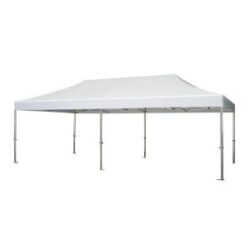Every truck has a story that begins on the open road. It carries goods, travels great distances, and supports industries that keep our society moving. Yet, when the engine stops running, many think its story ends. That belief is far from true. In today’s world, old trucks continue to serve a purpose long after their final trip. Through recycling, they become part of what experts call the circular economy — a system where waste turns into resources. In Townsville and across Australia, this approach is shaping a new age of environmental awareness and sustainable industry. Visit Website
What Is the Circular Economy?
The circular economy is a modern way of managing resources. It focuses on reducing waste by reusing and recycling materials instead of discarding them. In this system, every product — from a plastic bottle to a large truck — is designed or processed to have more than one life. The goal is to keep materials in use for as long as possible, reducing the pressure on natural resources and cutting pollution.
For trucks, this means their metal, rubber, glass, and electronic components can be reused in many forms. When a vehicle reaches the end of its life, it becomes a valuable source of materials that feed back into production lines. This process saves energy, supports manufacturing, and protects the planet.
How Truck Recycling Fits into the System
Truck recycling is one of the most effective examples of the circular economy in action. When an old truck arrives at a yard, it does not simply sit and rust. It begins a process that involves careful dismantling, sorting, and repurposing.
Each vehicle is inspected before recycling begins. Components such as engines, batteries, and tyres are removed for reuse or safe disposal. Fluids like oil and coolant are drained and treated properly to prevent pollution. Metals including steel, aluminium, and copper are separated and sent for reprocessing.
This practice prevents harmful waste from entering landfills and reduces the need to extract raw materials from the earth. Recycling a tonne of steel, for instance, saves about 1.5 tonnes of carbon dioxide emissions compared to producing new steel from iron ore. It also cuts down energy use by nearly 75%.
The Role of Scrap Yards in the Recycling Chain
Scrap yards in Townsville and other parts of Australia are central to this cycle. They act as collection and processing centres where old trucks are given a second life. The work is precise and detailed. Workers identify reusable components, separate materials, and prepare metals for recycling facilities.
Engines that can still function are reconditioned and resold. Doors, panels, and mirrors may find their way onto other vehicles. Even broken parts are useful, as they can be melted and reshaped into new products. Nothing goes to waste when handled correctly.
These yards operate as key links between the past and the future of transportation. They keep old trucks from becoming pollution sources and help industries access recycled materials for manufacturing.
Environmental Importance of Truck Recycling
Truck recycling is not only a mechanical process; it is an environmental responsibility. Old vehicles contain materials and fluids that can harm soil and water if left to decay. By recycling them, harmful elements are removed safely while reusable metals are kept in circulation.
According to the Australian Bureau of Statistics, vehicle recycling contributes significantly to national efforts for emission reduction. Each recycled vehicle prevents hundreds of kilograms of waste from reaching landfills. It also lowers the demand for mining activities that often damage ecosystems.
This practice demonstrates how sustainability and industry can work together. The recycling of trucks proves that even large machines can play a part in environmental protection when handled responsibly.
Economic and Social Benefits
The circular economy is not just about the environment; it also strengthens local economies. Recycling yards and processing plants in Townsville provide jobs and training opportunities for skilled workers. They support local businesses that depend on recycled metals, spare parts, and reconditioned equipment.
This approach also helps reduce import costs for raw materials. Instead of relying solely on mined resources, manufacturers can use recycled steel and aluminium to meet demand. This saves money, reduces waste, and supports long-term sustainability goals.
When people choose recycling options such as cash for trucks townsville, they contribute to this larger economic cycle without even realising it. The decision to recycle supports jobs, reduces pollution, and keeps the city’s industrial network active and productive.
From Scrap to Steel: The Transformation Journey
The journey from scrap truck to new steel begins with collection and dismantling. Once the parts are sorted, metals are sent to recycling facilities. There, the materials are shredded, cleaned, and melted at high temperatures. The molten metal is then poured into moulds or rolled into sheets used for new manufacturing projects.
The recycled metal can return to the road in many forms. It might become part of a new vehicle, a building frame, or even public transport infrastructure. Through recycling, a single truck’s materials may live on for decades in different shapes and uses.
This constant loop of reuse is what defines the circular economy — turning yesterday’s waste into tomorrow’s foundation.
Reducing Energy and Emissions
The energy savings from truck recycling are remarkable. Producing steel from recycled scrap requires much less electricity than refining it from raw ore. Research shows that energy use can drop by more than half, which has a direct effect on greenhouse gas emissions.
In addition to saving energy, recycling also reduces the environmental damage caused by mining. Fewer mining operations mean less habitat destruction, soil erosion, and water contamination. These combined effects make truck recycling one of the most efficient methods for building a sustainable future.
Innovation and Future Trends
The recycling industry continues to grow as technology advances. Automated dismantling tools, advanced sorting systems, and improved smelting methods are making the process more accurate and productive. These developments allow more materials to be recovered and reused than ever before.
Electric trucks and hybrid vehicles are also influencing recycling practices. New methods are being introduced to safely process batteries and electronic systems, ensuring that the next generation of trucks remains part of the circular economy rather than becoming a new source of waste.
Townsville and other Australian cities are embracing these changes, turning recycling into a core part of their environmental goals.
Conclusion
The circular economy on four wheels is more than a concept; it is a movement that shapes how we view waste, industry, and progress. Every truck that reaches the end of its driving life begins a new chapter in recycling. Through careful dismantling, metal recovery, and reuse, Townsville’s recycling yards help create a sustainable path for the future.
Truck recycling shows that sustainability does not always mean starting from scratch. Sometimes, it means seeing value in what already exists. The circular economy teaches that nothing truly ends — it simply changes form and continues to serve a new purpose on the road to a cleaner and more responsible world.


